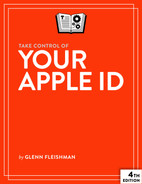Sign In with Your Apple ID
Major digital firms—including Amazon, Facebook, Google, and Twitter—set up a way to reduce the number of accounts you needed to create across the internet by letting you proxy your account with them instead. Instead of creating a new account in an app or at a website, you would click a Connect with Facebook button or something similar.
Over the years, it’s become increasingly clear how much information gathering goes along with that third-party login, as each of these companies can collect more information about everything you do via your behavior at these unrelated sites.
Apple has staked out privacy as one of their tentpoles, and their “Sign in with Apple” option lets you create accounts while limited exposure of personal data and behavior.
In this chapter, I explain how Apple’s third-party sign-in works, and the options offered to let you be more or less identified.
Learn How Sign in with Apple Works
There’s no setup required to use Sign in with Apple. When you visit a site or use an app that offers the option, you see a standard button. However, because it relies on standard browser technology, you should be able to sign in using any brand of browser running on one of the supported operating system releases, not just Safari.
The first time I used the feature, I received a large information screen with a lot of detail (Figure 43).
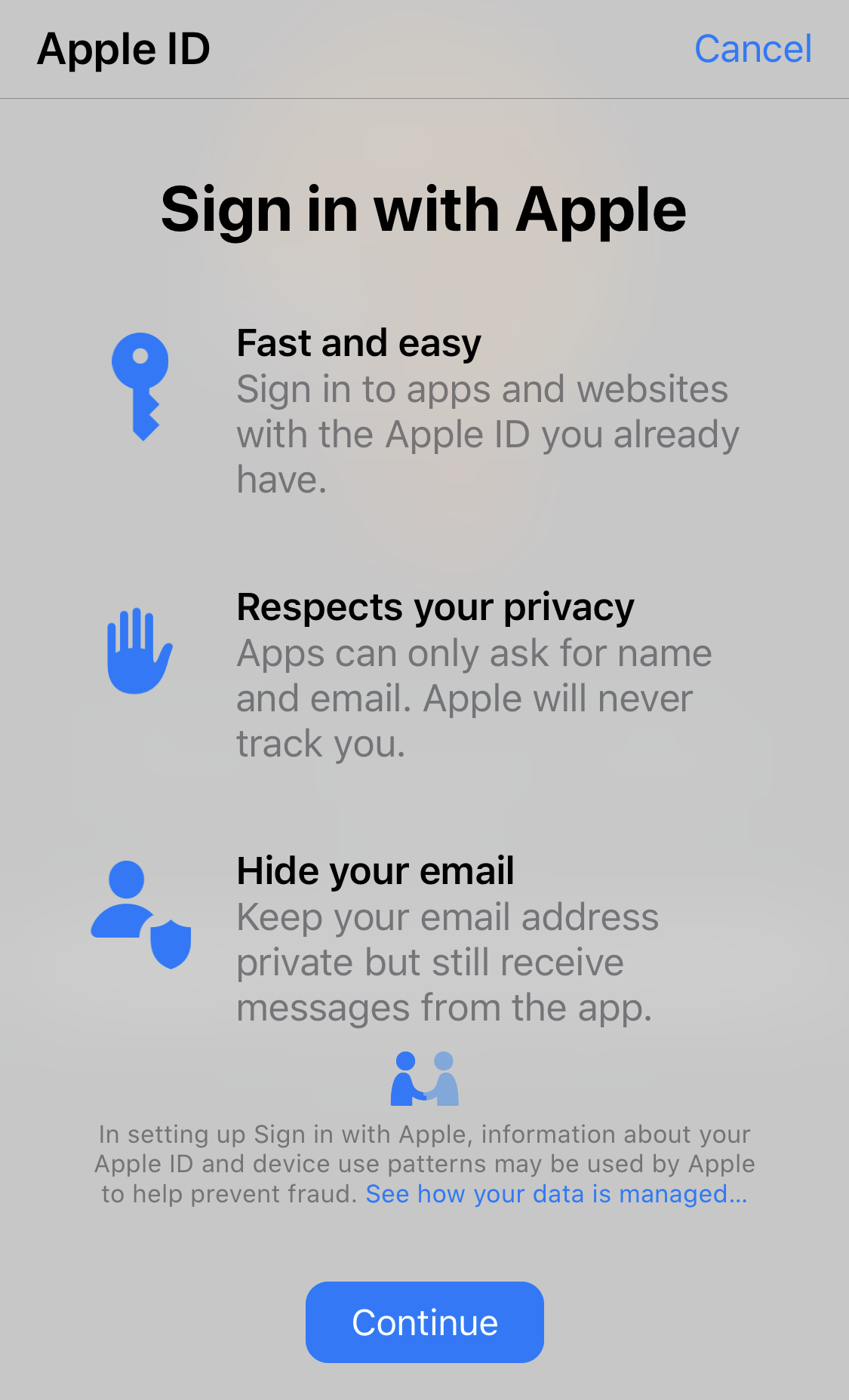
When you click Sign in with Apple from a device with Touch ID or Face ID, you can authorize the usage with a fingerprint or your face. On a device with no biometrics or biometric options disabled, you’ll be presented with a typical Apple ID login request, including a 2FA entry.
Apple handles all this behind the scenes, so the party with which you’re interacting (if it’s other than Apple) never gains access to any of your Apple ID information at all. In this way, it’s identical to the other third-party login systems.
The site or app receives a token associated with your account and stores that in its systems. But it can also request a full name and email address. In that case, Apple presents an additional dialog into which you can choose what information to use.
Use Sign in with Apple
While Sign in with Apple is simple in practice, as with so many things we get used to, there’s an initial learning curve, as Apple presents a variety of screens with unique and fresh information.
On launching an app or using a website that supports Sign in with Apple, you see a branded button (Figure 44).
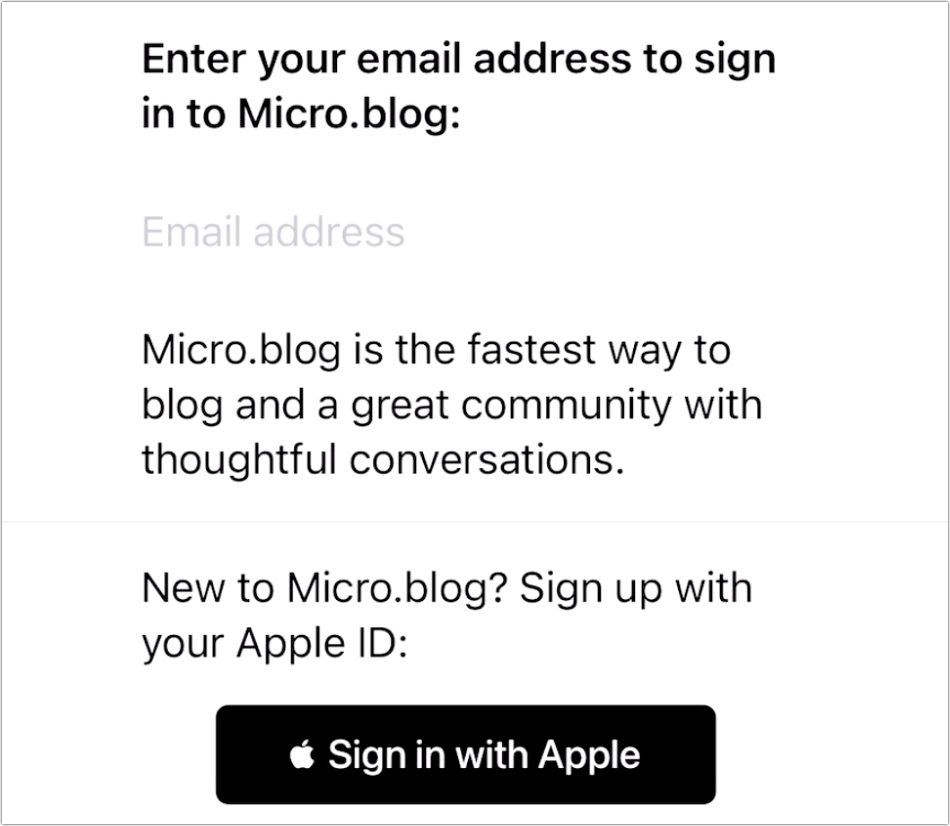
After you tap the “Sign in” button, Apple presents a sheet that offers you options to choose from (Figure 45). Apple prefills your name as it appears in your Apple ID account, but you can click the remove ![]() icon to delete it and change it. It also offers you two choices: Share My Email and Hide My Email.
icon to delete it and change it. It also offers you two choices: Share My Email and Hide My Email.
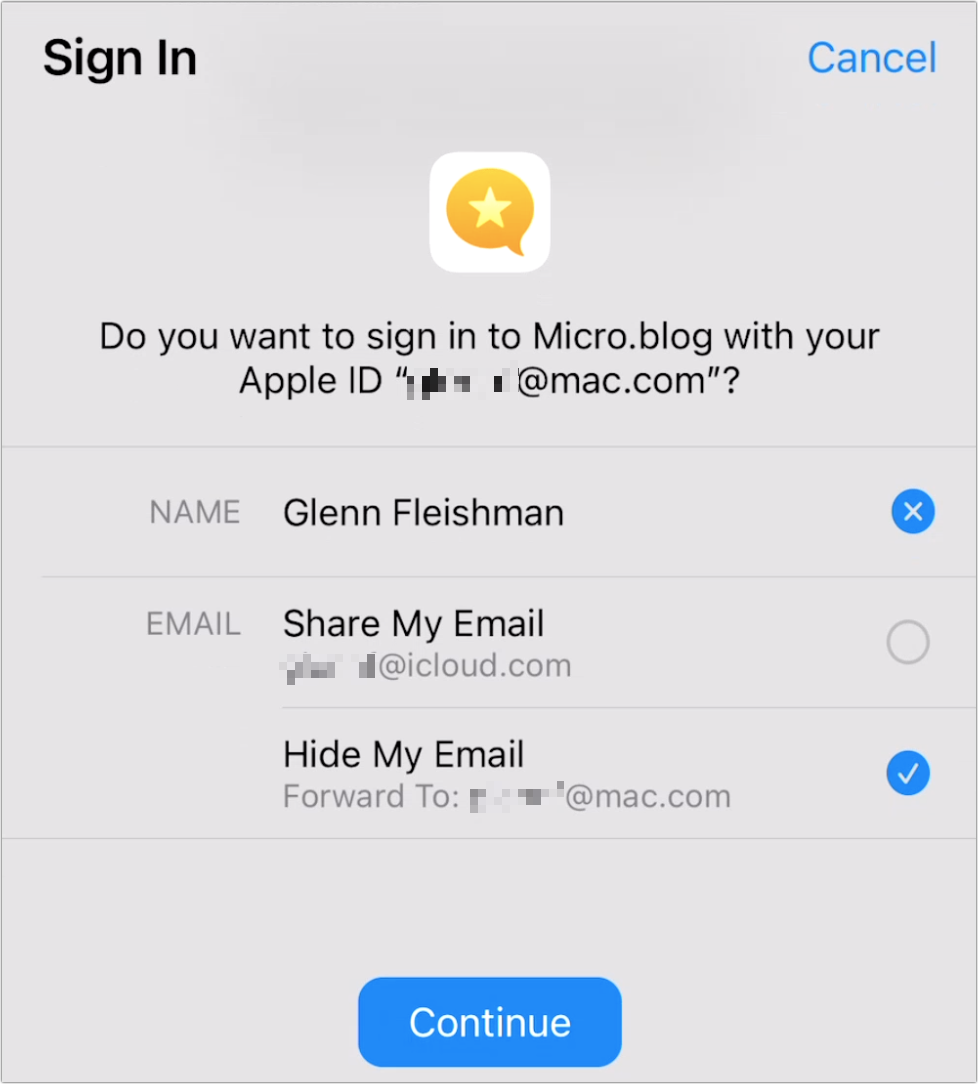
Choose Share My Email, and Apple provides that to the app or site. If you have multiple emails associated with the Apple ID, you can select among those addresses.
Choose Hide My Email, and Apple creates a random email account name that passes through its relay servers. The party requesting your address never actually sees it.
Click Continue and the account is created.
If you log out of the app, the association remains. The next time you log back in to it, iOS and iPadOS present a different login message (Figure 46).
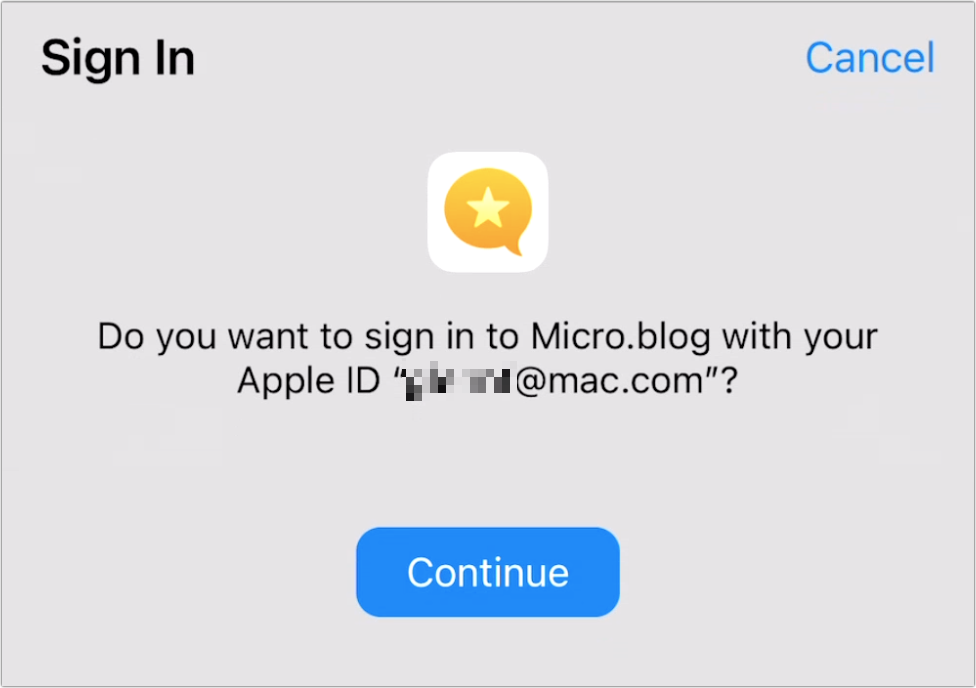
View and Remove Linked Accounts
You can manage all your Sign in with Apple connections through any of three places, each of which provides the same interface, thankfully! Each location shows a list of connected apps and sites, and you can click an entry to reveal its details (Figure 47). (All entries in this view are labeled “used Hide My Email,” even those created with Sign in with Apple—a confusing decision on Apple’s part.)

Here’s where to go:
In iOS 13/iPadOS 13 or later: Go to Settings > Account Name > Sign-In/Password & Security > Apps Using Apple ID.
In macOS Monterey: Go to System Preferences > Apple ID > Password & Security, and then click Edit to the right of the Apps Using Your Apple ID heading.
In macOS Ventura or later: Go to System Settings > Account Name > Sign-In/Password & Security, and then click Edit to the right of the Apps Using Apple ID heading.
On the Apple ID website: Log in, click Sign-In and Security at left, and then click Sign in with Apple.
With Hide My Email addresses you have two options:
Copy the email address: You may want to copy the relay address to use for some purpose, such as logging in to the website of the service without using Sign in with Apple, say from an older system or non-Apple device.
Apple for some reason has a different way of copying for each place you can find the address:
In iOS/iPadOS, touch and hold This App Received and then tap Copy.
In macOS Monterey or later, click the Copy button.
On the Apple ID website, click “Manage settings” and then click “Copy email address.”
Disable forwarding: You can turn off email forwarding, but keep the account connection active. This time, two methods:
In iOS/iPadOS, forwarding is nested two levels deep. In any entry, tap Manage Settings. This brings up a list of all Apple-managed addresses. Now tap the entry you want to modify, disable the Forward To switch, and tap Turn Off to confirm.
In macOS click Turn Off and confirm.
On the Apple ID site, click “Manage settings,” and then click “Turn off forwarding” and confirm.
In all three places, you will see Stop Using Apple ID (or “Stop Using Sign in with Apple” on the website), which is the nuclear option. It revokes the invisible token used with Hide My Email, while also deleting the email address for forwarding. This typically deletes your account entirely at the site or app.
Because Stop Using Apple ID breaks account access, Apple gives you a chance to back out. The choices appears as Cancel or Stop Using in iOS/iPadOS and macOS and Keep Using or Stop Using on the Apple ID site (Figure 48).

